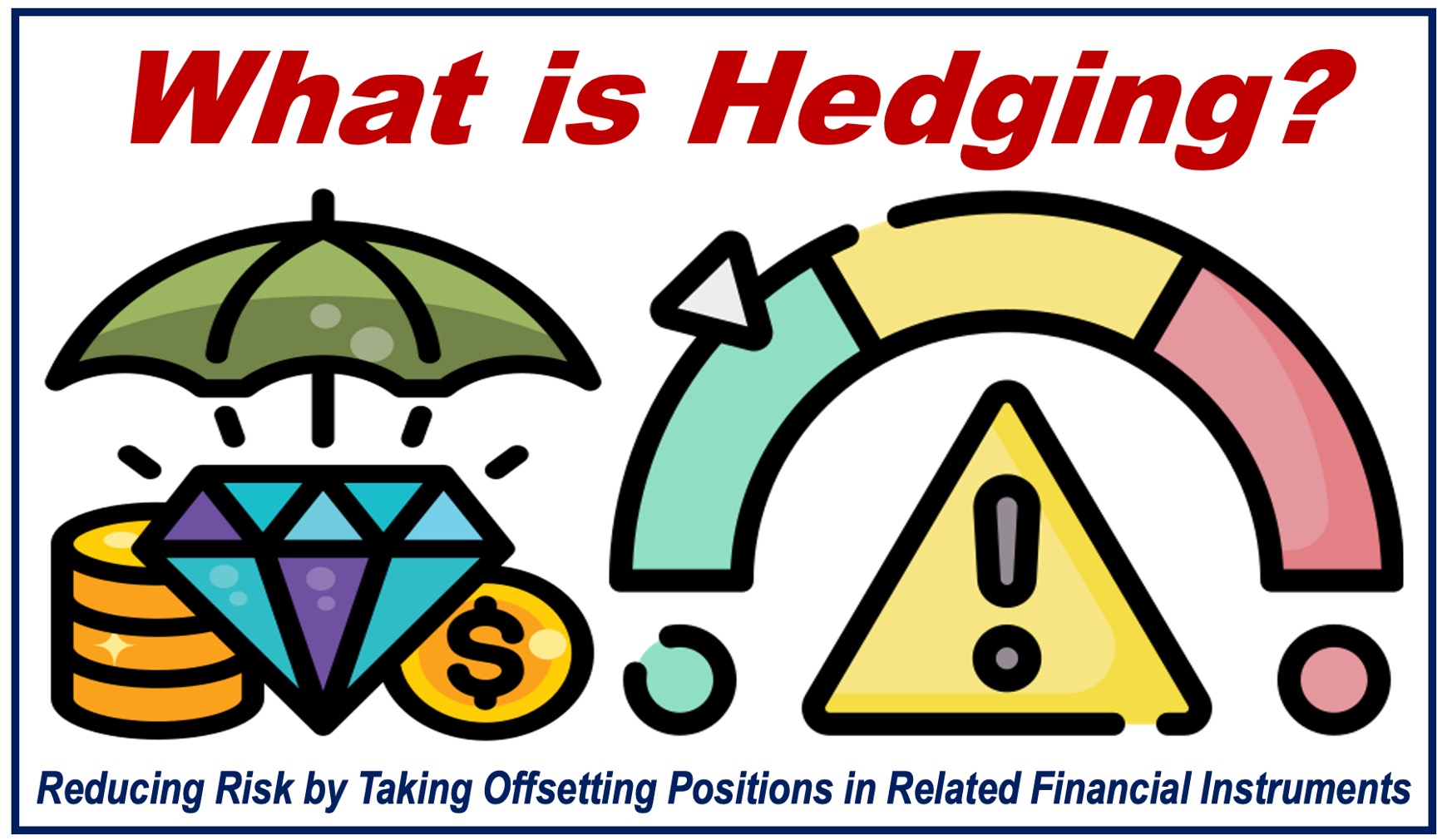What is Hedging?
In the world of finance, hedging is a strategy to minimize or manage the risk of price movement of assets. It is a way of controlling or limiting risk or loss.
The Cambridge Dictionary has the following definition of hedging:
“The activity of reducing the risk of losing money on shares, bonds, etc. that you own, for example, by buying futures or options.”
A simple example of hedging
Imagine you are planning to purchase a car in a couple of months. However, you are worried that the price may go up before you have saved enough money to buy it. You may look for a way to lock in today’s price.
If the car salesperson suggests you can fix the price by paying a 30% deposit today, and you accept, you are taking part in hedging.
In the financial world, hedging works in a similar, but more complex way. Fundamentally, hedging is like an insurance policy against financial losses.
Hedging is common
Investors, companies, and individuals use hedging to protect themselves against potential losses on investments.
There are many ways to hedge, including using derivatives like options, futures, and forwards. These financial instruments allow you to secure a fixed price today for a transaction that will take place in the future.
A coffee shop owner, for example, may be worried that the price of coffee beans will rise, so they enter into a futures contract. They buy coffee beans at a fixed price in the future, regardless of market price changes.
If the price of beans rises, the coffee shop owner saves money by buying at a lower, fixed price. However, if the price falls, they will lose out because they are locked into the higher fixed price. Hedging is not risk-free.

Risk management
Hedging is a form of risk management that can be very effective if you use it correctly. You need to calculate whether the costs involved in purchasing the derivative instrument and potential losses if the market moves in an unexpected direction is worth the risk.
For many people and businesses, hedging is definitely worth the risk, otherwise, it would not be so popular.
Conclusion
Hedging is a protective strategy to safeguard against unpredictable price movements. It can be a valuable tool for reducing risk.

